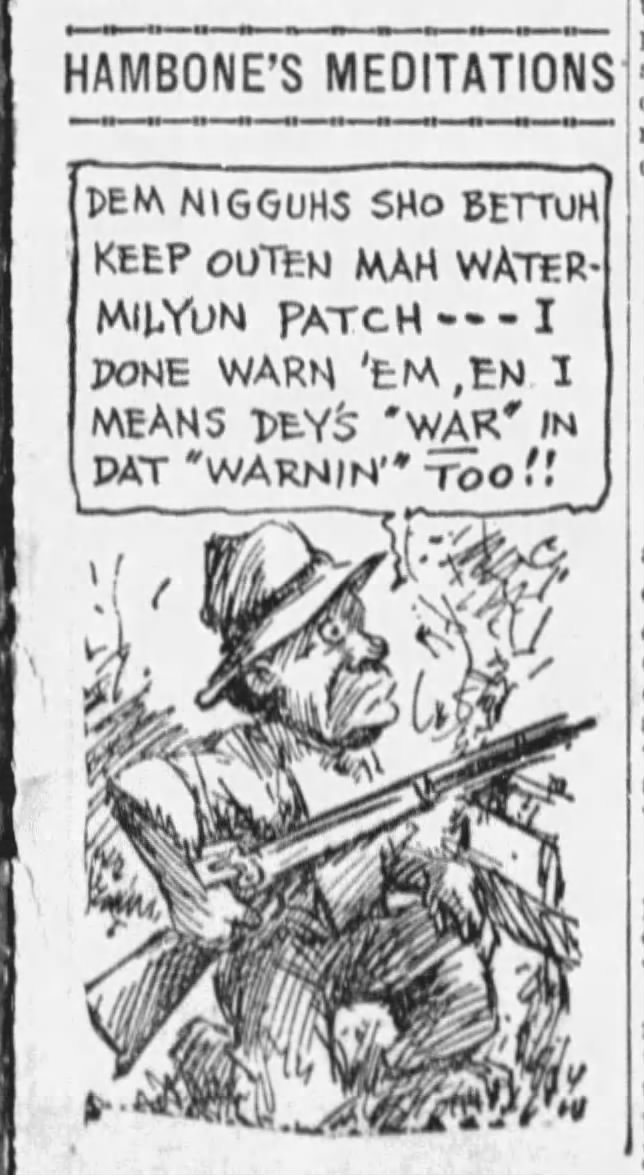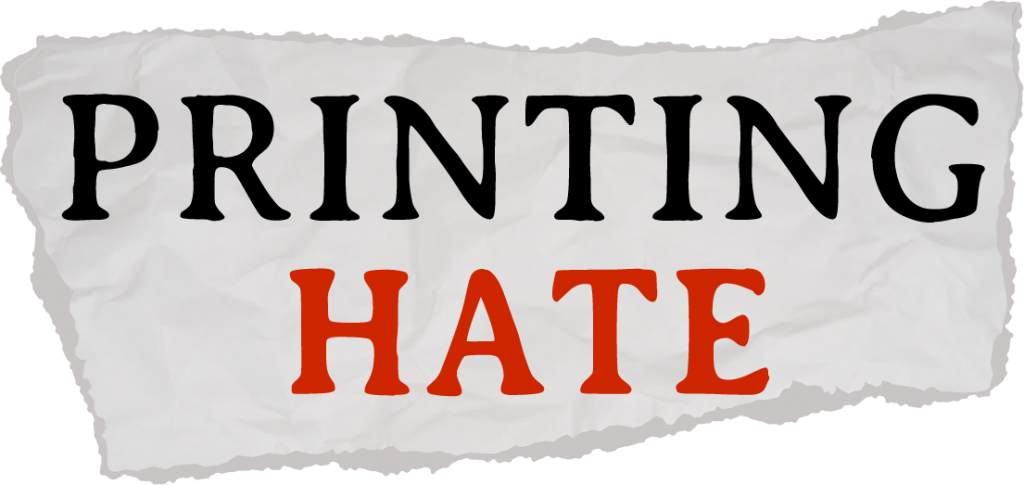By Brittany N. Gaddy
Readers of The Commercial Dispatch and dozens of other Southern newspapers in the early 20th century were greeted often, sometimes daily, sometimes on the front page, with “Hambone’s Meditations,” a racist caricature of a stereotypical Black man reminiscent of minstrel show characters.
He had overdrawn lips, often smoked a pipe and spoke in non-standard English that was nearly undecipherable, such as “I RUTHER DAT OLE BULL-DAWG BITE ME DAN TER TEAH MAH BRITCHES ENDURIN’ DESE HAHD TIMES!” On more than one occasion, Hambone used the word n—-.
This work is a collaboration of the Howard Center for Investigative Journalism and Capital News Service at the University of Maryland, Morgan State University, Hampton University, Howard University, Morehouse College, North Carolina Agricultural & Technical State University and the University of Arkansas.
The caricature was created by James P. Alley, a cartoonist for The Commercial Appeal in Memphis, Tennessee, in 1915, according to United Press International. Hambone’s Meditations first appeared in The Commercial Appeal in 1916, according to the Jim Crow Museum at Ferris State University.
The caricature ran in The Dispatch until March 3, 1942 and endured for more than 20 years longer in other newspapers.
PRINTING HATE
EXPLORE ALL STORIES
Alley died in 1934 but his sons Cal and James Alley carried on the caricature. It ran in the Commercial Appeal even following the assassination of the Rev. Martin Luther King Jr. in Memphis.
The caricature was discontinued after 1968 at the persistent urging of civil rights groups. The Commercial Appeal recognized the mistake of publishing the caricature during the publication’s 175th Anniversary. (The Commercial Appeal was owned by Scripps-Howard from 1936 to 2015, when the company spun off its newspapers. The Scripps Howard Foundation supports the Howard Center for Investigative Journalism at the University of Maryland.)

“It was a newspaper, after all, that after 40 years still ran a daily cartoon featuring an insulting caricature of an African-American named ‘Hambone’ even as black strikers walked the city’s streets wearing signs attesting that ‘I Am a Man,’” wrote editor Tom Charlier.

